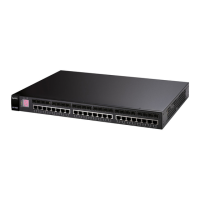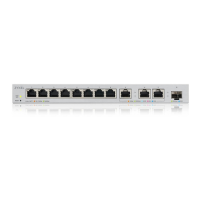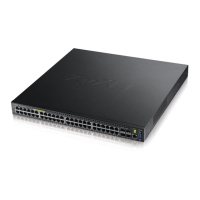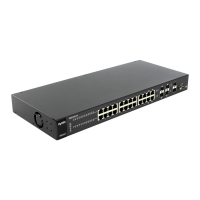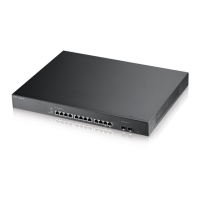Chapter 50 OSPF
XGS4600 Series User’s Guide
464
50.10 IPv6 OSPF Configuration
Use this screen to activate OSPF for IPv6 and set general settings. Click IP Application > OSPF > IPv6 OSPF
> Configuration to display the IPv6 OSPF Configuration screen. See Section 50.1 on page 448 for more
information on OSPF.
Figure 367 IP Application > IPv6 OSPF > Configuration
The follow table describes the related labels in this screen.
Table 216 IP Application > IPv6 OSPF > Configuration
LABEL DESCRIPTION
Active OSPF for IPv6 is disabled by default. Select this option to enable it.
Router ID Router ID uniquely identifies the Switch in an OSPF. Enter a unique ID (that uses the format of an
IP address in dotted decimal notation) for the Switch.
Distance Enter a number from 10 to 255 to specify the administrative distance that is assigned to routes
learned by OSPF.
The lower the administrative distance value is, the more preferable the routing protocol is.
Note: You cannot set two routing protocols to have the same administrative
distance.
Apply Click Apply to save your changes to the Switch’s run-time memory. The Switch loses these
changes if it is turned off or loses power, so use the Save link on the top navigation panel to save
your changes to the non-volatile memory when you are done configuring.
Cancel Click Cancel to begin configuring this screen afresh.
Area ID Enter a 32-bit ID (that uses the format of an IPv4 address in dotted decimal notation) that
uniquely identifies an area.
A value of 0.0.0.0 indicates that this is a backbone (also known as Area 0). You can create only
one backbone area on the Switch.
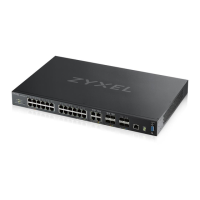
